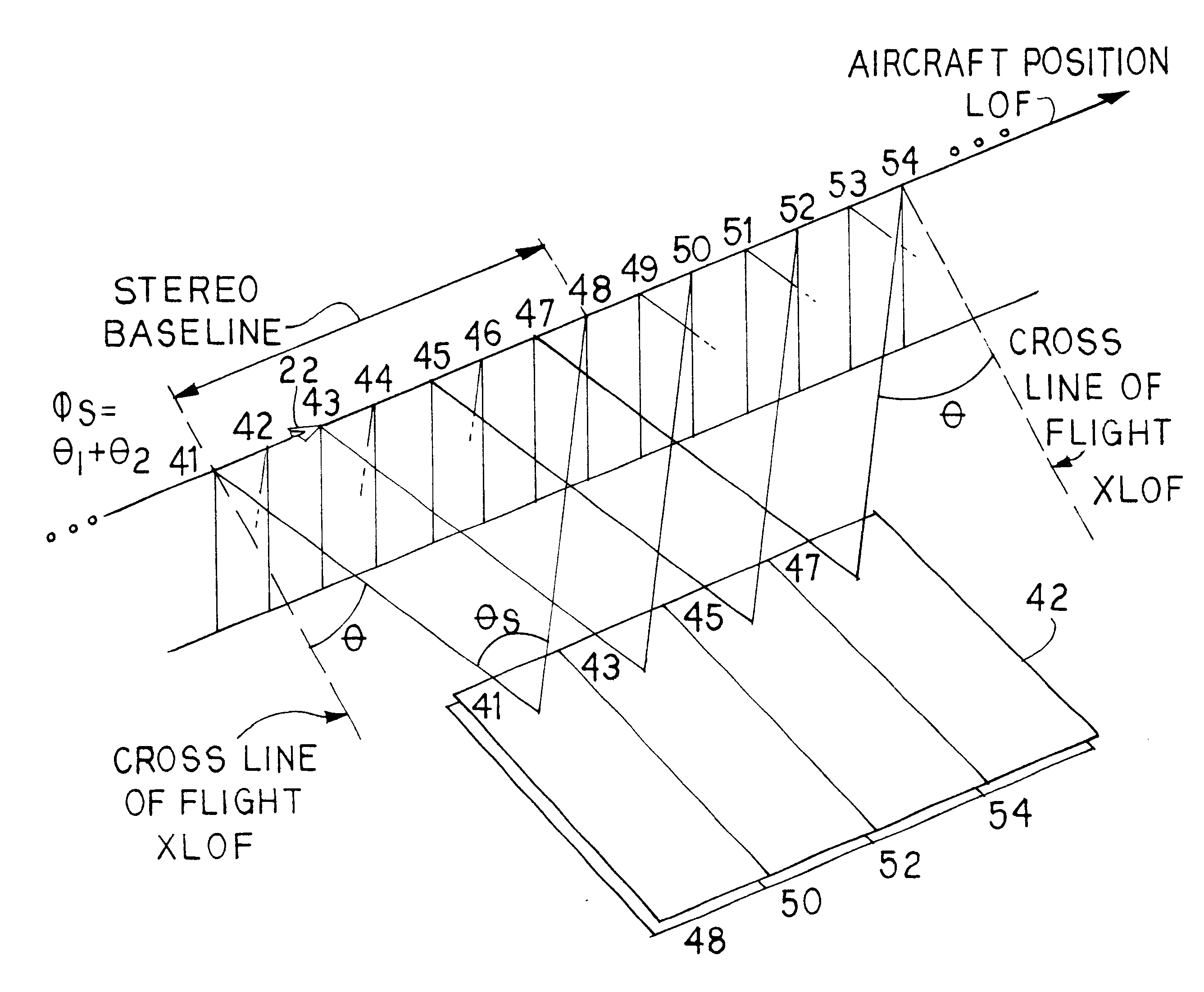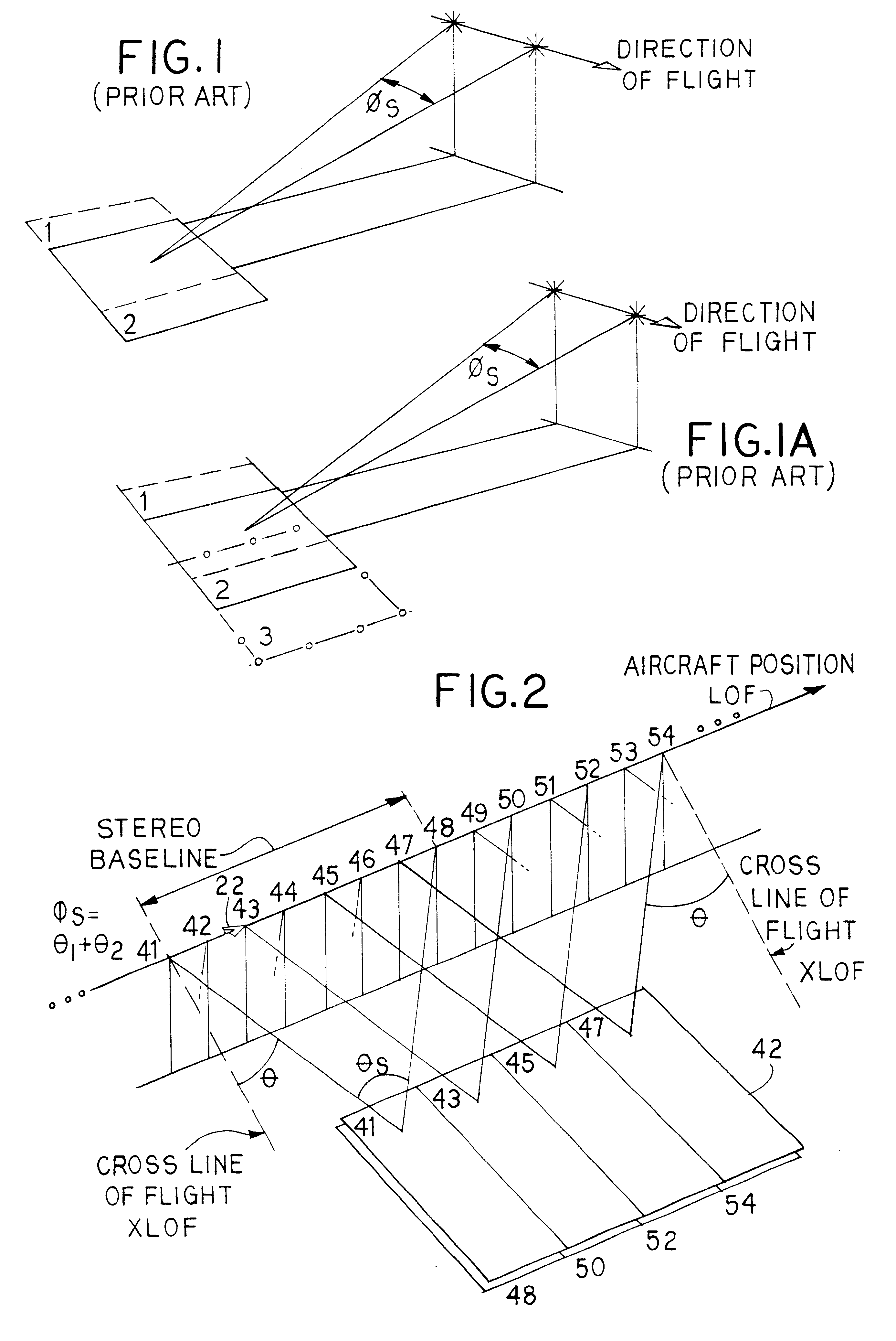High aspect stereoscopic mode camera and method
a stereoscopic mode and camera technology, applied in the field of cameras, can solve the problems of only generating minimal three-dimensional information for images, "low aspect" stereo image pairs, and complexity
- Summary
- Abstract
- Description
- Claims
- Application Information
AI Technical Summary
Problems solved by technology
Method used
Image
Examples
Embodiment Construction
In a first aspect, and with reference to FIG. 2, a method is provided for operating a camera installed in a moving vehicle in a manner to generate high aspect stereo images. The primary application is in aerial photography, therefore the present discussion will be directed to that application. The invention is also applicable to any vehicle that is used to generate stereo imagery, including aircraft, terrestrial vehicles, and surface or submarine water craft.
When the images are generated in a side oblique orientation (a typical scenario in aerial reconnaissance, surveillance and mapping), the method involves repeatedly rotating the camera about an azimuthal axis to generate images at two different azimuthal angles (.theta.1 and .theta.2), which will be preferably, but not necessarily, forward and aft of the cross line of flight direction. In the example of FIG. 2, the numbers 41, 42, 43, 44 . . . indicate the sequence of images generated by the camera and the position of the aircraf...
PUM
 Login to View More
Login to View More Abstract
Description
Claims
Application Information
 Login to View More
Login to View More - R&D
- Intellectual Property
- Life Sciences
- Materials
- Tech Scout
- Unparalleled Data Quality
- Higher Quality Content
- 60% Fewer Hallucinations
Browse by: Latest US Patents, China's latest patents, Technical Efficacy Thesaurus, Application Domain, Technology Topic, Popular Technical Reports.
© 2025 PatSnap. All rights reserved.Legal|Privacy policy|Modern Slavery Act Transparency Statement|Sitemap|About US| Contact US: help@patsnap.com



